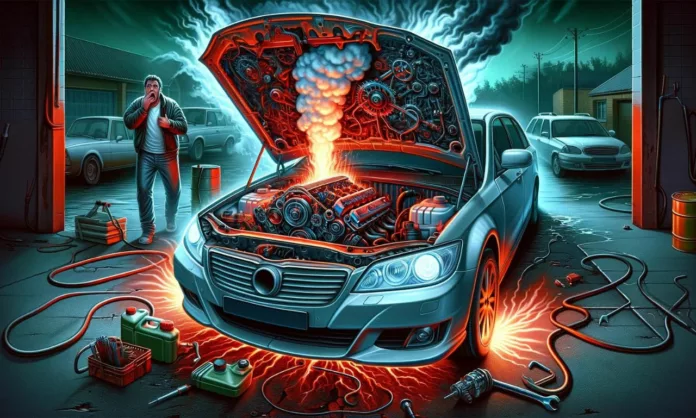Engines rely on oil to lubricate and protect their moving parts. Running an engine without oil can cause significant damage, leading to costly repairs or even the need for a complete engine replacement. Recognizing the signs of damage from oil starvation is crucial for vehicle owners and mechanics alike. Here’s a step-by-step guide on how to tell if an engine is damaged from running without oil:
Table of Contents
Step 1: Listen for Unusual Noises
- Knocking or Tapping Sounds: When an engine is run without oil, it lacks lubrication, causing metal-to-metal contact. This can manifest as a knocking, tapping, or rattling sound from the engine, especially noticeable at idle or low speeds.
- Increased Noise Levels: An overall increase in engine noise, including whirring, grinding, or screeching, can indicate parts are operating without proper lubrication and might be wearing down prematurely.
Step 2: Check for Overheating
- Engine Temperature: Without oil, an engine’s cooling system is compromised, leading to overheating. Keep an eye on the temperature gauge; if it consistently reads higher than usual or if the engine overheats rapidly, it could be a sign of damage.
- Warning Lights: Modern vehicles have sensors and warning systems. An overheating engine might trigger dashboard warnings such as the check engine light or a temperature warning light.
Step 3: Inspect the Oil
- Oil Level and Quality: Check the engine’s oil level and quality. If the oil is significantly low or absent, it’s a clear sign the engine has been running without adequate lubrication. Also, look for metal particles in the oil, which can indicate internal engine wear.
- Oil Pressure: Low or zero oil pressure, indicated by the oil pressure gauge or warning light, suggests that the oil is not circulating properly, potentially due to a lack of oil or internal damage blocking oil passages.
Step 4: Perform a Compression Test
- Compression Loss: Use a compression tester to check each cylinder. A significant drop in compression in one or more cylinders can indicate damage to internal components like piston rings, cylinder walls, or valves, which could result from running without oil.
Step 5: Examine the Exhaust
- Smoke Color: Keep an eye on the exhaust smoke. Blue smoke indicates burning oil, which might suggest oil has leaked into combustion chambers due to worn seals or rings, exacerbated by running the engine without oil.
- Excessive Smoke: Excessive smoke of any color (white, blue, or black) can indicate various types of engine damage, some of which may be related to inadequate lubrication.
Step 6: Look for Power Loss or Irregular Performance
- Reduced Engine Power: A damaged engine might not produce as much power, leading to sluggish acceleration and reduced overall performance.
- Rough Idling or Stalling: If the engine idles roughly, stalls frequently, or experiences irregular performance, it could be a sign of internal damage affecting its operation.
Step 7: Consult a Professional
- Professional Diagnostic: If you suspect engine damage, it’s crucial to consult with a professional mechanic. They can perform a detailed diagnostic, including checking the engine with a scanner, inspecting internal components with an endoscope, and more in-depth analysis.
Conclusion
Detecting engine damage from running without oil involves a combination of sensory observations, mechanical checks, and professional diagnostics. At the first sign of trouble, it’s important to stop driving the vehicle and address the issue to prevent further damage. Regular maintenance and oil checks are the best preventive measures against engine damage due to oil starvation.

